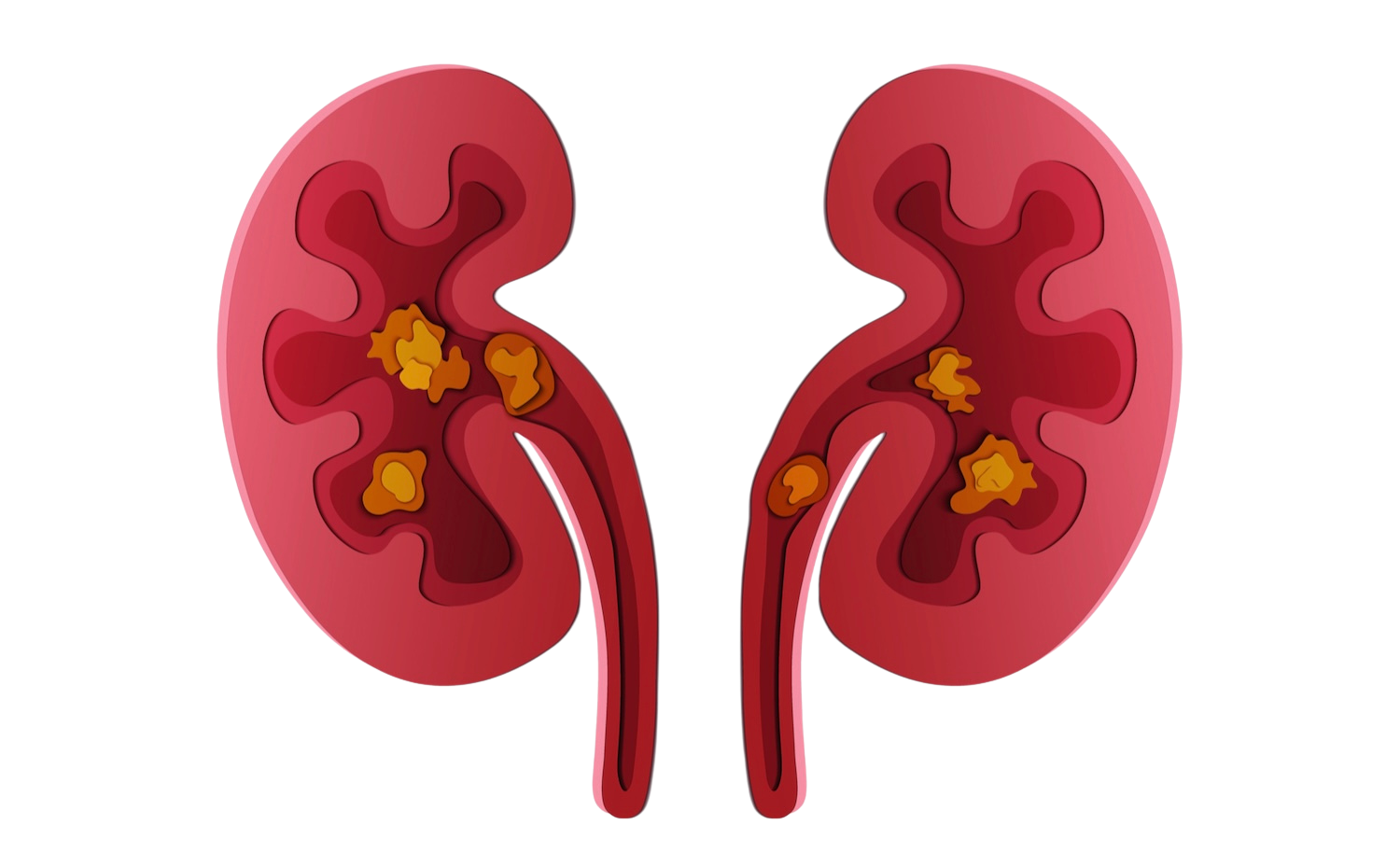Tulane Urology
Kidney Stones
The Referral Center for Complex Kidney Stone Management
Experience counts when it comes to advanced procedures like percutaneous lithotripsy, retrograde intrarenal surgery, and laser lithotripsy. Trust our specialized expertise for effective treatment and optimal outcomes.
What are kidney stones?
Kidney stones (renal lithiasis, nephrolithiasis) are small, hard mineral deposits that form inside the kidneys. The stones are made of mineral and acid salts. Kidney stones have many causes and can affect any part of the urinary tract — from the kidneys to the bladder. Often, stones form when the urine becomes concentrated, allowing minerals to crystallize and stick together.

Types of kidney stones
Knowing the type of kidney stone helps to determine the cause and may provide clues to prevent more.
- Calcium Stones: Most kidney stones are calcium stones, usually in the form of calcium oxalate. Oxalate is a naturally occurring substance found in food, including fruits, vegetables, nuts, and chocolate. The liver also produces oxalate. Factors such as diet, high doses of vitamin D, intestinal bypass surgery, and certain metabolic disorders can increase calcium or oxalate in urine.
- Struvite Stones: These stones form in response to an infection, such as a urinary tract infection. They grow quickly and become large, often with few symptoms or little warning.
- Uric Acid Stones: These stones form in those who do not drink enough fluids or lose too much fluid. A high-protein diet, gout, and certain genetic factors may also increase the risk of uric acid stones.
- Cystine Stones: These stones form in those with a hereditary disorder that causes the kidneys to excrete excessive amounts of certain amino acids (cystinuria).
- Other Stones: Rare types of kidney stones can also occur.
Signs & Symptoms of Kidney stones
Kidney stones present in a variety of ways. The most common symptom is severe, intense pain. The pain is usually sudden and may gradually increase in some individuals. It can be steady or intermittent and is often accompanied by nausea and vomiting. Depending on the stone’s location in the ureter, the pain usually starts in the flank or back area and slowly radiates downward to the inguinal ligament, bladder, urethra, or testicle/penis.
When stones are present in the ureter within the bladder wall, they may cause urinary symptoms such as painful urination and increased frequency. The associated nausea and vomiting can contribute to dehydration. Many patients will have blood in the urine (hematuria), which is usually a result of local stone trauma as it passes along the lining of the kidney, ureter, and bladder.
Kidney stones can also foster bacteria growth, increasing the risk of urinary tract infections. If an infection is accompanied by obstruction or partial obstruction in the kidney or ureter, emergency decompression of the kidney is required to prevent the spread of infection to the kidney or bloodstream (urosepsis). Untreated obstruction can lead to irreversible kidney damage, particularly if lasting longer than four to six weeks.
Risk Factors for kidney Stones
Risk factors for stone disease are generally divided into non-dietary, dietary, and urinary.
- Non-Dietary Risk Factors: Patients with stone-forming family members have a 2.5 times greater risk of developing stones than those without stone-forming family members. A number of medical conditions are highly associated with kidney stone disease, including Crohn’s disease, inflammatory bowel disease, obesity, gout, and diabetes.
- Dietary Risk Factors: Urinary composition is influenced by fluid intake, diet, and kidney regulation of metabolites. Dietary risk factors include meals rich in animal protein, oxalate, and salt. Low calcium intake and reduced urine volumes have also been identified as contributing factors.
- Urinary Risk Factors: Approximately 97% of patients with kidney stones will have one or more identifiable urinary risk factors, which are detectable through a metabolic profile or 24-hour urine chemistry. These factors include elevated urinary calcium (hypercalciuria), oxalate (hyperoxaluria), uric acid (hyperuricosuria), decreased urine citrate (hypocitraturia), and/or urinary tract infection.
Treatment Options for kidney stones
Treatment for kidney stones varies, depending on the type of stone and the cause.
- Drinking Water: Drinking as much as 2 to 3 quarts (1.9 to 2.8 liters) a day may help flush out the urinary system.
- Pain Relievers: Passing a small stone can cause some discomfort. To relieve mild pain, doctors may recommend pain relievers, such as ibuprofen, acetaminophen, or naproxen sodium.
- Medical Therapy: Doctors may prescribe a medication to help pass a kidney stone. This type of medication, known as an alpha blocker, relaxes the ureter muscles, allowing the stone to pass more quickly and with less pain.
Large Stones with Symptoms: Kidney stones that cannot be treated with conservative measures — either due to their size or complications (bleeding, kidney damage, or ongoing urinary tract infections — may require more extensive treatment. Procedures may include:
- Extracorporeal Shock Wave Lithotripsy (ESWL): A non-invasive procedure in which surgeons use focused shock waves (sound waves) to break kidney stones into smaller fragments, allowing them to pass more easily through the urinary tract.
-
Percutaneous Nephrolithotripsy (PCNL): A relatively minimally invasive yet highly skilled procedure involving a variety of nephroscopes to access kidney stones through a tiny flank incision. Through this incision, scopes and lithotripsy equipment are introduced to fragment and suction out the stone debris. Tulane Urology has over four decades of experience in managing complex kidney stones with PCNL techniques.
- Ureteroscopy: A minimally invasive procedure in which surgeons insert a flexible or rigid ureteroscope through the urethra and bladder to reach the ureter or kidney, enabling direct visualization, laser fragmentation, and stone removal.
- Laparoscopic Surgery: A minimally invasive procedure in which surgeons cut small incisions in the abdomen or flank then insert a camera (laparoscope) and surgical instruments to locate and remove kidney stones.
- Robotic-Assisted Surgery: A minimally invasive surgery in which surgeons use a robotic system (such as the da Vinci Surgical System) to perform complex procedures with enhanced precision, control, and visualization.
